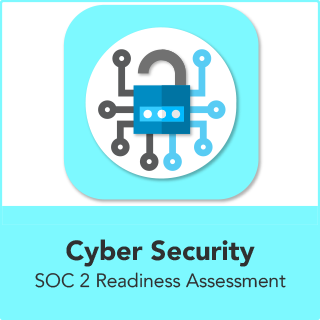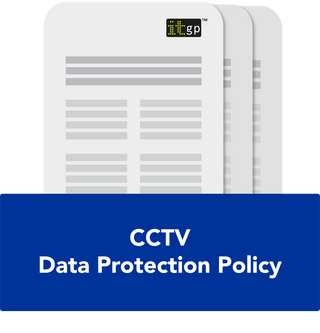SOC (System and Organization Controls) audits provide an independent assessment of the risks associated with using service organisations and other third parties.
SOC 2 audits assess service organisations’ security, availability, processing integrity, confidentiality and privacy controls against the AICPA (American Institute of Certified Public Accountants) TSC (Trust Services Criteria).
A SOC 2 report is generally aimed at existing or prospective clients, and is used to assess how well an organisation safeguards customer data and how effectively its internal controls operate.
This blog outlines nine steps that will help you understand what SOC 2 requires, prepare your controls and documentation, and approach your first audit with confidence. It also includes a readiness checklist you can use to assess your current position.
1. Define your scope and objectives
A clear scope makes SOC 2 implementation manageable. Your first task should therefore be to define which systems, services and business units fall within scope – and whether you’re aiming for a Type 1 or Type 2 report.
- A Type 1 report assesses the design of your controls at a specific point in time.
- A Type 2 report assesses how well those controls operate over a defined period – usually 3 to 12 months.
Your objective might be to support customer assurance, meet contractual obligations or improve internal governance. Make sure this is agreed internally before you proceed.
2. Select the applicable Trust Services Criteria
SOC 2 audits revolve around your compliance with one or more of the five Trust Services Criteria:
- Security (also known as common criteria)
- Availability
- Processing Integrity
- Confidentiality
- Privacy
Only ‘security’ is mandatory. The others should be selected based on how your organisation delivers its services, what risks are involved and what your clients or regulators expect of you.
- Select availability if your customers rely on continuous access to your service.
- Select processing integrity if data accuracy and completeness are core to your product.
- Select confidentiality if you store or process sensitive data.
- Select privacy if you handle personal or regulated data (such as under the GDPR or CCPA).
You’ll need to justify any exclusions, so keep a record of your decision-making process.
3. Conduct a readiness assessment and gap analysis
Before engaging auditors, conduct a SOC 2 readiness assessment. This is essentially a gap analysis that maps your current controls against the selected TSCs.
This process highlights where documentation is missing, controls are informal or policies are not consistently applied. You can perform this internally or engage a consultant to lead the review.
4. Plan your remediation activities
Once you’ve identified the gaps, build a remediation roadmap. This should include:
- Drafting or updating policies and procedures
- Implementing or tightening technical controls (e.g. access restrictions, encryption)
- Formalising change management, incident response and logging processes
- Introducing training and awareness activities
- Ensuring your systems can produce audit-ready evidence
5. Implement and document your controls
Now close the gaps. Create or update your internal documentation and ensure controls are fully operational. This often includes:
- Role-based access controls and approval workflows
- Asset inventory and change tracking
- Monitoring, alerting and logging
- Secure system development practices
- Backup and recovery testing
Auditors will expect documentation that describes each control, the evidence you collect to demonstrate compliance and the processes you follow when something goes wrong.
6. Test your controls internally
Don’t wait for the audit to find out what’s broken. Test your controls before engaging the auditor. This may include:
- Reviewing log files for completeness
- Simulating an incident to test your response procedures
- Checking access lists for unauthorised accounts
- Verifying that policies are being followed in practice
If you’re preparing for a Type 2 report, these internal tests should mimic the monitoring you’ll need to carry out during the audit period.
7. Choose your audit partner
Although companies and individuals with the right practical expertise – such as IT Governance Ltd – can help you prepare for a SOC audit, the audit itself can only be conducted by a qualified member of the ICAEW (Institute of Chartered Accountants in England and Wales) or an equivalent organisation.
(In the USA, SOC audits can only be performed by an independent CPA (Certified Public Accountant) or accountancy organisation.)
Look for one with:
- Experience in your industry or service type
- Familiarity with your chosen TSCs
- A practical approach to evidence and control design
You’ll work closely with them during the engagement, so choose a company that communicates clearly and understands your business.
8. Complete the audit process
Your auditor will assess your controls’ design and effectiveness, then create a report including:
- An opinion letter;
- Management assertion;
- A detailed description of the system or service;
- Details of the selected trust services categories;
- Tests of controls and the results of testing; and
- Optional additional information.
9. Maintain your compliance
Although SOC 2 reports don’t technically expire, they’re generally considered valid for a year and must be renewed annually. To ensure your recertification is as easy as possible, you’ll therefore want to maintain your compliance with your selected TSC.
Ongoing compliance means:
- Monitoring your controls and collecting evidence throughout the audit period
- Keeping documentation up to date as systems evolve
- Addressing incidents or changes that may affect your controls
- Conducting regular internal reviews and awareness training
Continuous monitoring platforms can help streamline this process – but it still requires sustained oversight and accountability.
SOC 2 checklist
This checklist provides a quick reference for your implementation team. Adapt it to your organisation’s scope and selected criteria.
| Scope | Identify systems and services in scope for SOC 2 |
| Objectives | Determine audit goals and choose between Type 1 and Type 2 |
| Criteria | Select relevant Trust Services Criteria |
| Risk analysis | Perform a formal risk assessment aligned with your scope |
| Gap assessment | Map current controls to TSCs and identify gaps |
| Policies and procedures | Draft or update internal policies and workflows |
| Technical controls | Implement access, encryption, monitoring and incident response mechanisms |
| Training | Run security awareness and role-based training |
| Internal testing | Validate controls through pre-audit testing |
| Evidence collection | Gather logs, screenshots and other documentation to demonstrate control operation |
| Audit partner | Select a qualified firm with SOC 2 experience |
| Ongoing monitoring | Plan for continuous compliance and future audits |
SOC 2 Readiness Assessment
If you need help preparing for a SOC 2 audit, our consultants can help. Our SOC 2 Readiness Assessment evaluates your organisation’s audit-readiness by assessing the suitability of the TSC risk-mitigating controls to the service(s) you offer.
The SOC 2 Readiness Assessment results in a detailed report that identifies any areas in which your controls fall short of the required standard.
This service includes advice on defining a suitable audit scope, guidance in compiling the content of the service or system description, and assistance in identifying which of the TSC are relevant to your organisation’s key risks.
We also provide a SOC 2 Remediation Service to help you rectify any compliance gaps identified by the SOC 2 Readiness Assessment and a SOC 2 Maintenance Service to help you maintain your compliance with your selected TSC to ensure your recertification audit goes as smoothly as possible.
The post Nine Steps to SOC 2 Compliance – Including a SOC 2 Readiness Checklist appeared first on IT Governance Blog.



